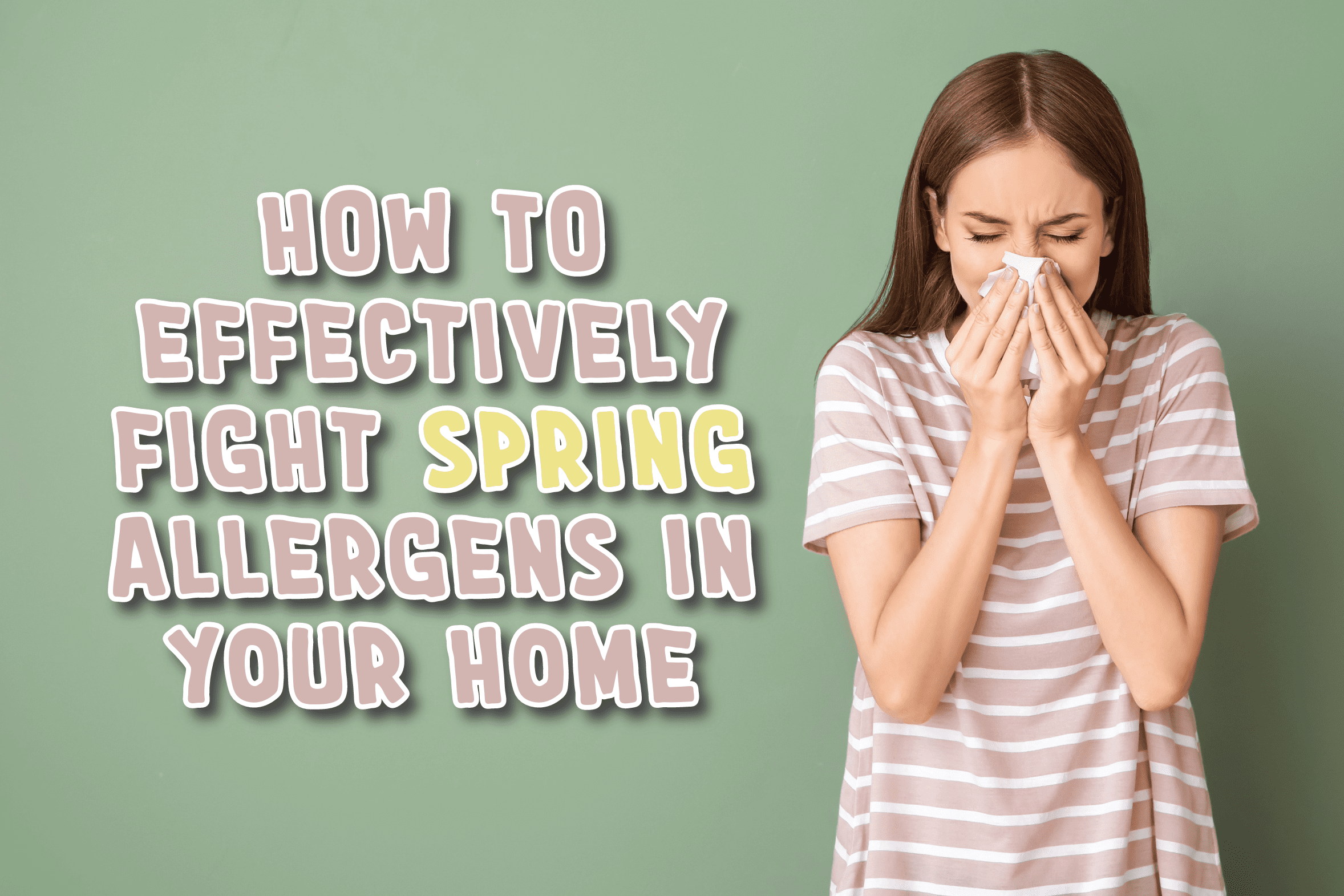Did you know that March 19th marks the first day of spring this year? While we can look forward to warmer weather and beautiful flowers, it also means seasonal allergies for many Ohio residents. This season bring about several uncomfortable allergy seasons for many; these symptoms are commonly known as hay fever. If you’re one of those who is affected by the dreaded allergy season, Loveland Heating & Air has got you covered with some practical solutions to tackle allergens in your home.
Learn the Symptoms of Hay Fever
When you start to feel the onset of allergy symptoms, you may actually be feeling the symptoms of what is known as hay fever. Hay fever, or allergic rhinitis, is the most common allergy in Ohio. It’s when your immune system goes into overdrive over pollen and other allergens, making histamines that cause allergy symptoms. These symptoms can be anywhere from mild to super intense and stick around for weeks or even months.
Some common hay fever symptoms include:
· Sneezing
· Runny or stuffy nose
· Itchy eyes, mouth, throat or skin
· Ear congestion
· Postnasal drip
If you find yourself experiencing these symptoms often during spring and summer, chances are you’ve got hay fever due to allergens in Ohio.
Learn Why Ohio’s Landscape Causes Allergies
Before we get into it, let’s talk about why Ohio has such crazy high pollen and allergy levels. Ohio has a mix of everything – cities, farms, forests, lakes, and rivers. And guess what? Each of these places has its own set of plants and trees that produce pollen. Now, with this mix of landscapes and plant life, you can imagine the crazy combination of environmental factors that make allergies worse. This leads to pollen being released all year round, making allergy season feel like it never ends (generally, it ranges from February to November.)
Learn the Kinds of Allergens in Ohio
These include but are not limited to:
· Tree Pollen: Pollen from trees like oak, maple, birch, cedar, pine, and hickory can totally trigger allergies, especially in the springtime.
· Grass Pollen: Grasses like Kentucky bluegrass, timothy grass, and Bermuda grass release pollen, leading to allergies, particularly in late spring and early summer.
· Weed Pollen: Ragweed is a major weed in Ohio that produces tons of pollen in late summer and early fall, causing allergies for many folks.
· Mold Spores: Mold spores are a common allergen in Ohio. Mold can grow on decaying stuff like vegetation, leaves, and other organic matter.
Learn How to Combat Allergens with Home Solutions
While you can’t completely prevent allergies, there are some practical ways to lessen the impact of allergens in your home.
1. Make sure to keep your windows closed during peak pollen season (usually spring and summer).
2. Don’t forget to vacuum regularly with a HEPA filter to get rid of allergens from carpets and furniture.
3. Make it a habit to wash your bedding and curtains regularly in hot water to eliminate pollen and other allergens.
4. After being outside, hop in the shower right away to wash off any pollen or allergens that may be stuck on you.
5. Don’t neglect dusting, especially those bookshelves and other surfaces that tend to collect dust.
6. Remember to change your air filters regularly to prevent allergens from circulating in your home. Every 1-2 months is a good rule of thumb to follow.

Fun Fact to Think About: Guess what? Hay fever actually affects around 1 in 5 people during their lifetime.
Learn How to Combat Allergens with Professional Solutions
When it comes to finding immediate relief, incorporating practical home solutions into your daily life is the way to go. But there might be times when you need to explore other professional solutions or services. Here are a few suggestions worth considering:
Get a Whole-Home Purifier – This awesome whole-home air purification system can be easily installed in your HVAC system to constantly clean and purify the air in your home. It uses advanced ionization technology to zap away allergens, bacteria, viruses, and other particles that can trigger allergies and respiratory issues. So, you can breathe easy and enjoy a healthier home environment!
Get a Whole-Home Dehumidifier – When humidity levels are high, it becomes an ideal place for allergens like mildew and mold to thrive. To make your home less friendly to these allergens, consider installing a whole-home dehumidifier. It helps reduce moisture and keeps it balanced.
Install A Smart Thermostat – Having a smart thermostat is a game-changer! It lets you control humidity levels at home, which means less mold and dust mites. Plus, you can schedule temperature changes and manage your HVAC system from anywhere.
Schedule a Ductwork Cleaning – Did you know that indoor air can be up to five times more polluted than outdoor air? Allergens like pollen, dust mites, and mold spores can build up in your home’s ductwork, affecting air quality and causing pesky allergy symptoms. But here’s the good news: getting your air ducts professionally cleaned can help improve the air quality in your home and reduce those annoying allergies. The best part? You only need to do this every three to five years.
If any of these options catch your interest, feel free to give us a call! We can discuss what might be the best fit for you, your family, and your home.
Allergies can be a real hassle for many people. But by understanding what causes allergies and recognizing their symptoms, you can make your home and work environments more allergy-friendly. So, go ahead and enjoy spring without all the suffering, and if you need help with your HVAC air quality, remember to give us a call!
Count on Loveland Heating & Air for anything HVAC-related! Call us today at (513) 216-5913, or schedule an appointment online now by clicking here!





